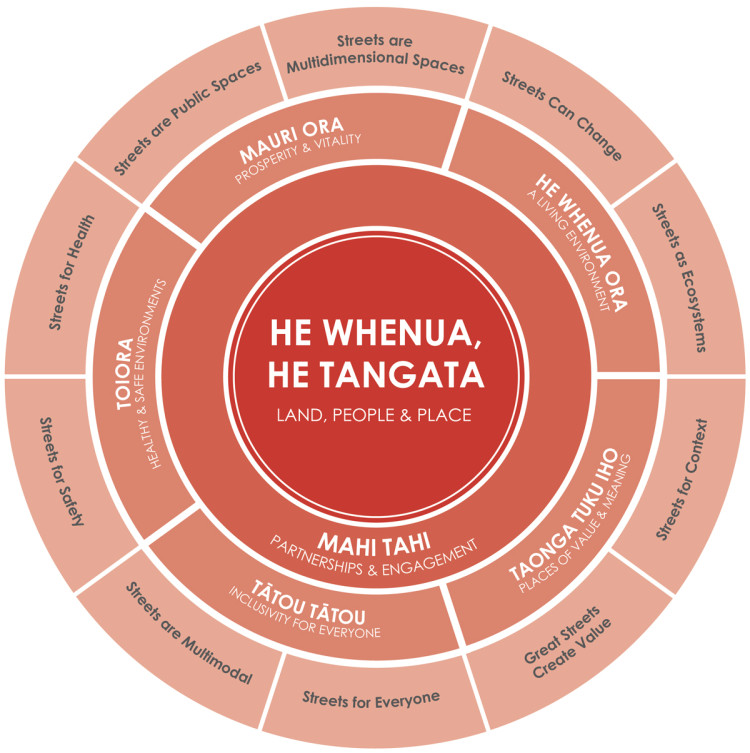Streets are complex and dynamic multidimensional public spaces having many structures, surfaces and elements (including for example resting or socialising areas, footpaths, landscaping, cycle infrastructure, vehicle and bus lanes, public transport infrastructure (for example, bus stops) and parking). People experience their city/town through its streets because they offer space for movement of people and goods as well as a place where a variety of uses and activities occur during day and night.
When planning and designing streets there is a complex set of closely interconnected considerations that needs to be addressed. Particularly when planning and designing a change to an existing street where often spatial constraints, increasing density and different demands and people activity it sustains, this complexity is aggravated.
An approach is required to integrate multiple functions into spatially constrained street environments in ways that improve well-being and the environment. The Aotearoa urban street planning and design guide (the Street Guide) identifies a set of principles to help shape and inform this.
Aotearoa urban street planning and design guide
The Street Guide uses the overarching ethos of He Whenua He Tangata to set six objectives for streets and ten design principles under these objectives to create healthy and liveable streets within Aotearoa:

He Whenua, He Tangata design principles (Source: Aotearoa urban street planning and design guide).
All ten principles are valid to create safer, attractive, welcoming and inclusive streets for people walking of all ages, abilities, gender and backgrounds.
Aotearoa urban street planning and design guide: Section 2: Design principles [PDF, 2.1 MB]
The Street Guide draws on national and international best practice to provide a framework for well-functioning urban environments; urban environments that provide great places for everyone to live, play and work, where people can move around safely and easily access a variety of transport options. The Street Guide links to the street types within the One Network Framework.
Some road controlling authorities (RCAs) have their own street planning and design guidance and often have specific requirements within their District Plans. Check the RCA resources relevant to your street project.
The One Network Framework (ONF) allows consideration of future aspirations for streets/roads and networks within wider spatial and growth planning strategies. It helps to establish the intended function of a street and plan for levels of investment and service.
The ONF outlines the range of street types that have varying movement and place functions. It does not dictate the final form of a street type; however, it is key consideration in street design, particularly with respect to the safe and appropriate speed for each street type.
While walking is a mode of transport, pedestrians are also closely correlated with the place function of a street. Hence, planning and designing pedestrian networks need to be considered regarding the place classification of the street.
Planning and designing streets requires the consideration of seven key characteristics that focus on the needs of all pedestrians. These are:
These characteristics should be used throughout the planning and design process to identify the impact of decisions on the pedestrian experience and to ensure a consistently high quality walking experience.
PNG: Pedestrian network characteristics
PNG: Pedestrian design principles
Specific guidance on the appropriate space to be allocated for walking and the type of pedestrian crossings to be used is provided in the footpaths and crossing topics of this guidance.
When designing a street, it is important to consider getting people to and from public transport, as that is integral to every public transport journey. Walking is one of the most common, practical, affordable and widely accessible ways people travel to and from public transport. Street design should therefore support attractive, safe, intuitive, direct and convenient access to and from public transport stops for people of all ages, abilities, genders and backgrounds.
More guidance to help inform how to get to and from public transport can be found in the Public Transport Design Guidance.
PTDG: Getting to and from public transport
The location and design of interchanges and stations needs to consider many aspects of walking, a comprehensive guidance document outlines these.